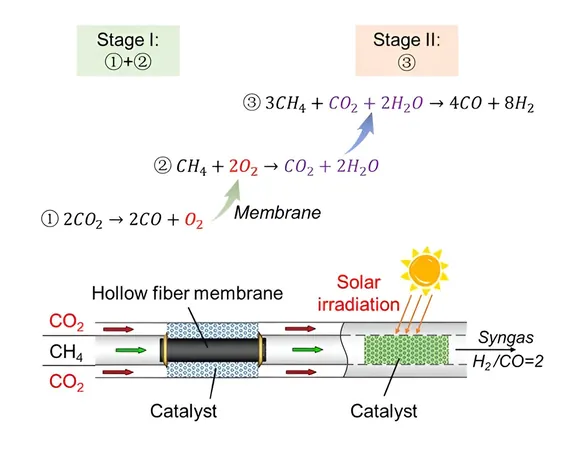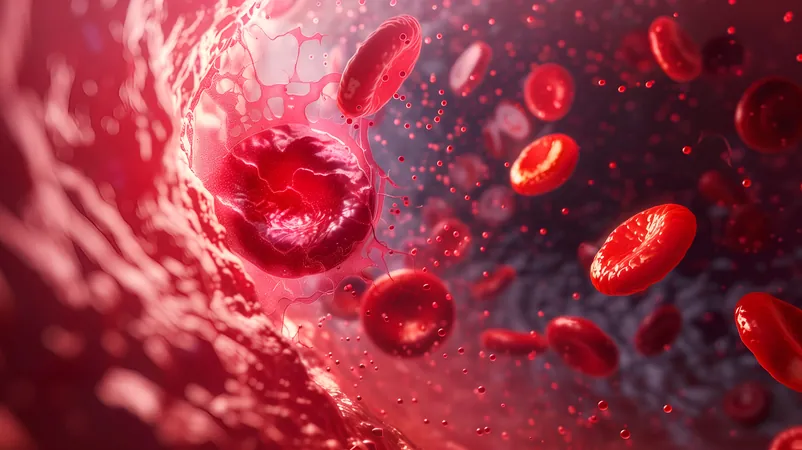
Breakthrough Solar-Activated Reactor Could Revolutionize CO2 Utilization!
2024-09-25
Breakthrough Solar-Activated Reactor Could Revolutionize CO2 Utilization!
In the ongoing battle against climate change, CO2 and CH4 emissions remain at the forefront as leading greenhouse gases. Innovative strategies to convert these gases into valuable chemicals are not only environmentally crucial but could also yield substantial economic benefits. However, the road to efficient conversion faces significant hurdles due to the molecular stability and energy constraints inherent to CO2 and CH4.
A promising solution lies within the realm of catalytic membrane reactors. These advanced systems employ oxygen-permeable perovskite membranes to facilitate two vital processes: separating oxygen and conducting heterogeneous catalytic reactions simultaneously. This dual functionality allows for the efficient transformation of CO2 and CH4, offering a significant advantage over traditional fixed-bed reactors.
Despite these advancements, several challenges persist, including mismatches between reaction speeds and the rate of oxygen separation, a low single-pass conversion rate for CO2 (often less than 30%), and the need for considerable energy input.
To tackle these issues head-on, researchers led by Wanqin Jin from Nanjing Tech University have developed a revolutionary two-stage catalytic membrane reactor. This innovative system integrates an asymmetric oxygen-permeable membrane and harnesses solar energy for the splitting of CO2 (2CO2 → 2CO + O2) and the oxidation of CH4 to syngas.
Published in the journal *Green Energy & Environment*, their study reveals exciting results. Co-author Guangru Zhang highlights, "Our reactor's design allows for oxygen generated from the CO2 splitting to be extracted with absolute selectivity, enabling its subsequent use in solar-assisted methane combustion and reforming."
The results are staggering: this solar-assisted reactor achieves a remarkable CO2 conversion rate of 35.4%, alongside a hydrogen yield of 18.1 mL min⁻¹ cm⁻²—figures that surpass those of both fixed-bed reactors and conventional catalytic membrane reactors absent solar support, by 62 times and 1.5 times, respectively.
Additionally, this flexible two-stage reactor design accommodates various membrane shapes, such as disk and hollow fiber configurations. This versatility is poised to facilitate an array of chemical reactions or processes under diverse temperature and pressure conditions.
With this breakthrough, Jin asserts, "Our work offers an innovative approach to reducing CO2 emissions, presenting an opportunity to significantly decrease the carbon footprint across various industries."
Could this new technology be the key to a greener future? Stay tuned as we continue to monitor developments in this groundbreaking field!



 Brasil (PT)
Brasil (PT)
 Canada (EN)
Canada (EN)
 Chile (ES)
Chile (ES)
 España (ES)
España (ES)
 France (FR)
France (FR)
 Hong Kong (EN)
Hong Kong (EN)
 Italia (IT)
Italia (IT)
 日本 (JA)
日本 (JA)
 Magyarország (HU)
Magyarország (HU)
 Norge (NO)
Norge (NO)
 Polska (PL)
Polska (PL)
 Schweiz (DE)
Schweiz (DE)
 Singapore (EN)
Singapore (EN)
 Sverige (SV)
Sverige (SV)
 Suomi (FI)
Suomi (FI)
 Türkiye (TR)
Türkiye (TR)